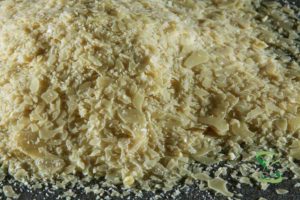A.F. Suter and Co. Ltd
Shellac, Waxes, Gums and Resins
- +44 (0) 1376 514953
- afsuter@afsuter.com
- Compass House, Eastways Industrial Estate, Witham, Essex, CM8 3YQ, United Kingdom
A.F. Suter and Co. Ltd
Shellac, Waxes, Gums and Resins
Get a FREE Quote (No Obligation)
Beeswax is a natural wax secreted by honey bees of the genus Apis, which they use to build honeycomb cells to store honey and protect their young within the hive. Yellow Beeswax is extracted from the honeycomb by heating in water, but can be bleached to create white Beeswax. Beeswax is produced worldwide, but major producers include India, Ethiopia, Argentina, Turkey and the Republic of Korea.
Beeswax is edible but is difficult for humans and other mammals to digest so has negligible nutritional value. It is soluble in most organic solvents but is insoluble in water and is resistant to hydrolysis and natural oxidisation so has good stability. It can be heated in water and reused, becoming pliable at a temperature of around 35-40 °C, before reaching its melting point at around 62-64 °C. However, Beeswax discolours if heated beyond 85°C and is flammable if exposed to a naked flame. Synthetic Beeswax is also available upon request.
Beeswax is used as a surface coating for fruit, reducing internal water loss and acting as a protective barrier against external moisture. It can also be used as a coating for cheese, helping to prevent mould growth by sealing out the air.
In Europe, food grade Beeswax (White and Yellow, EINECS 232-383-7) is authorised as a food additive E 901 [Commission Regulation EU 231/2012]. Beeswax (CAS 8012-89-3) – the grade is not defined – is also authorised for use on plastic materials and articles intended to come into contact with food [Commission Regulation EU 10/2011 – search for “Beeswax”]. In the US, Beeswax (Yellow and White, CAS 8012-89-3) is a Direct Food Substance Generally Regarded As Safe (GRAS): 21 CFR 184.1973. Beeswax is sometimes mixed with Rosin or Damar and melted onto a piece of cloth to make Beeswax wraps.
Beeswax is a food additive and is commonly used as a glazing agent for confectionery coatings. It is also an ingredient in chewing gum.
Beeswax is used to coat tablets and capsules. It is also an ingredient in surgical bone wax, used during surgery to control bleeding.
Beeswax is a key constituent in the manufacture of high quality candles, particularly traditional church candles, due to its flammability.
Beeswax is used in batik dying of fabrics and to strengthen and preserve sewing thread, cord, shoe laces, etc. It is also used in polish for shoes and other leather products.
Beeswax is used as an air- and water-proof sealant and is a component of sealing wax and furniture and floor polishes. It can also be blended with pine rosin to form an adhesive.
Beeswax is used in car polish and surfboard wax, and has traditionally been used to stamp university degrees and seal formal legal documents and Royal decrees. It is also used as a lubricant or a component in metal injection moulding. It also helps to insulate electronic components.
In the Art industry, Beeswax is used in drawing crayons and to make models for sculptures, decorations or jewellery, prior to being placed in a mould for lost-wax casting (cire perdu) in metal.
In the Beekeeping industry, Beeswax is used to make comb foundation, particularly where frame hives are used, and to attract swarms to empty hives.
In the Personal Care industry, Beeswax is used in skin care products such as hand creams, ointments and moisturisers, lip balm and lip gloss, as well as eye liner, eye shadow and blush. It is also used in haircare products to increase shine.













Registered Office:
146 New London Road, Chelmsford,
Essex.CM2 0AW
Company Reg No. 04296187
VAT No. GB 783 0308 36